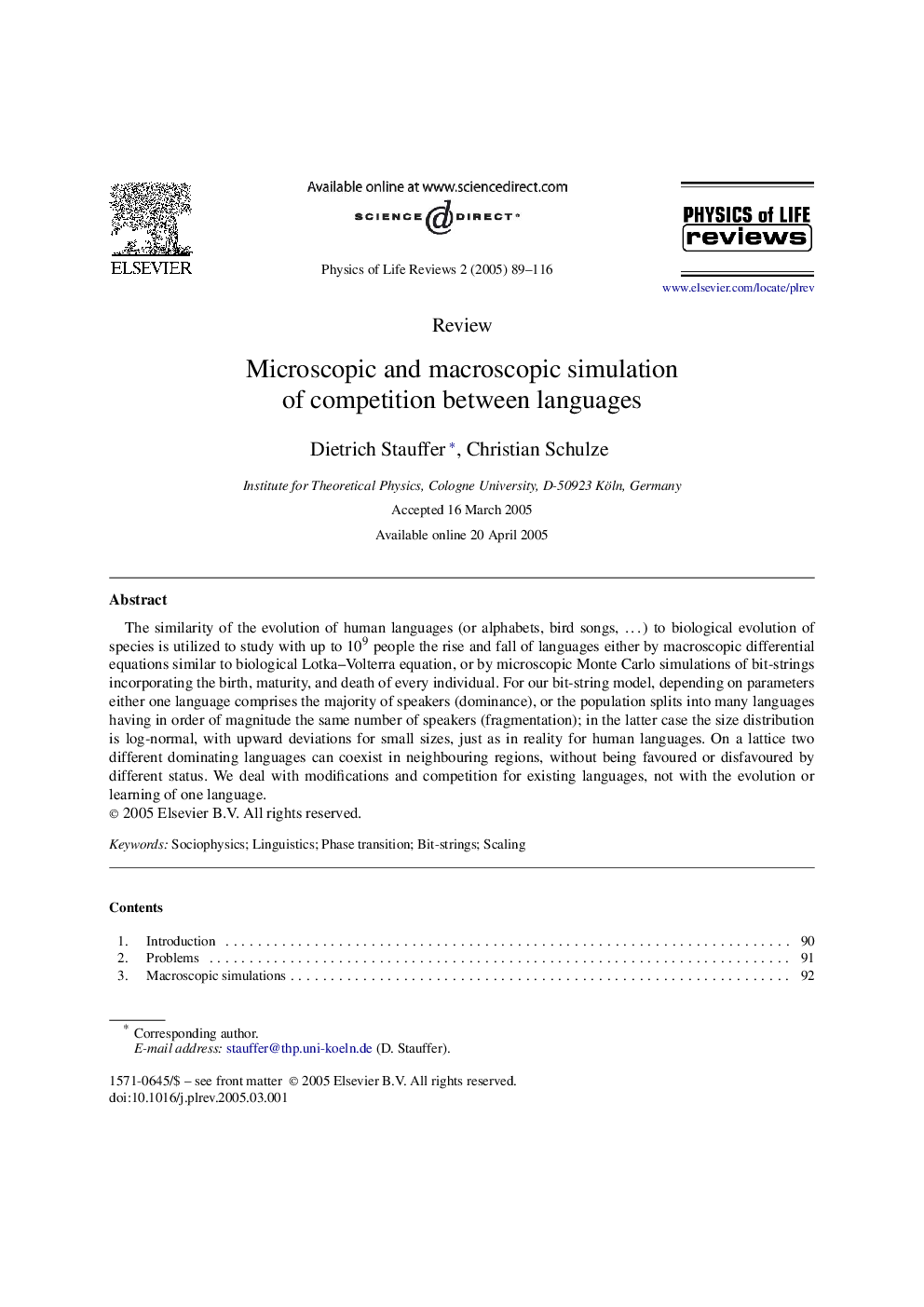| Article ID | Journal | Published Year | Pages | File Type |
|---|---|---|---|---|
| 9871271 | Physics of Life Reviews | 2005 | 28 Pages |
Abstract
The similarity of the evolution of human languages (or alphabets, bird songs, â¦) to biological evolution of species is utilized to study with up to 109 people the rise and fall of languages either by macroscopic differential equations similar to biological Lotka-Volterra equation, or by microscopic Monte Carlo simulations of bit-strings incorporating the birth, maturity, and death of every individual. For our bit-string model, depending on parameters either one language comprises the majority of speakers (dominance), or the population splits into many languages having in order of magnitude the same number of speakers (fragmentation); in the latter case the size distribution is log-normal, with upward deviations for small sizes, just as in reality for human languages. On a lattice two different dominating languages can coexist in neighbouring regions, without being favoured or disfavoured by different status. We deal with modifications and competition for existing languages, not with the evolution or learning of one language.
Related Topics
Physical Sciences and Engineering
Physics and Astronomy
Physics and Astronomy (General)
Authors
Dietrich Stauffer, Christian Schulze,
